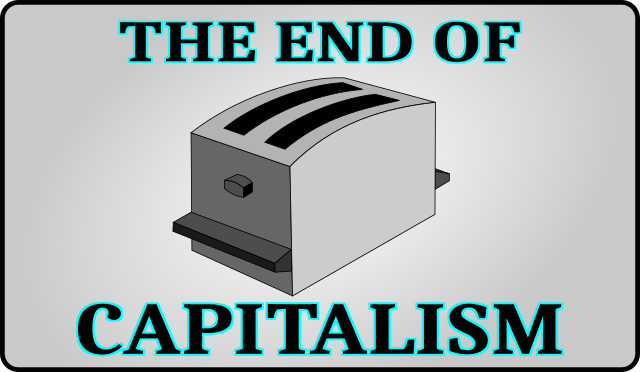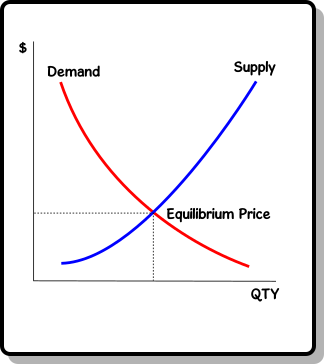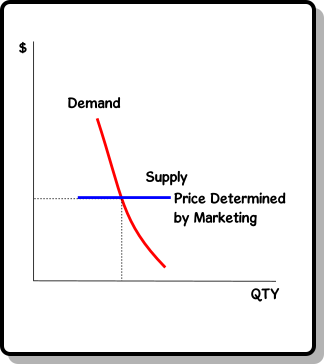

This is the standard Supply-Demand Curve taught in every Keynesian Economics book ever.
And, of course it seems quite logical.
The price goes down, more people will be able to buy it.
The price goes up, more manufacturers will want to produce it.
But, this is not the world we live in.
Monopolies exist in many places simply because no one wants to (or can) compete with economies of scale.
Such as, all of our toasters are made by the CCP.
They may have different names on the label, but they all trace back to a mere handful of points.


This Supply-Demand graph is closer to what exists today in developed nations for toasters.
The supply curve is a flat line. It goes from the minimum amount of toasters needed to keep a manufacturing building in existence and goes to the maximum amount of toasters that manufacturing facility can make without increased tooling.
Not until a sustained demand is shown for a long period of time, will a group open up another toaster manufacturing plant.
So, there is a very specific minimum amount of toasters and a maximum amount of toasters.
And almost nothing can change this.
What is worse is demand.
In developed nations there is really no actual demand for toasters. Everyone who wants one, has one. And, if you really wanted one, you could probably knock on three doors and if you are decent at asking, get a toaster.. or three.
Toaster purchases are done mostly because the old one is looking worn and shabby by people who wish their kitchens to look fabulous... or sometimes because the crappy shit they sell now-a-days breaks, and so you need a new toaster.

The price is set by marketing and adjusted through sales or coupons.
It has no bearing on the actual production cost.
(A complete toaster is about $1 to manufacture. Including those fancy ones you see for $100+ at the expensive stores)
Demand is set by how much advertising is done.
Magazines, especially those ones that show kitchen remodels.
Sales fliers showing this fabulous toaster at the awesome price of 10x the cost to manufacture!
Movies and television.
Without the planned obsolescence and getting people to buy a new toaster because they want the new stylish toaster, there would be almost no toaster sales. We would have to change to some model of manufacturing where you made a new toaster on demand.

The Supply-Demand curve taught in economics courses is really bogus and misleading.
There is a real cap on how much stuff a person can consume. Even if it was all free. So, those graphs of demand going parabolic as price goes down are bogus. You can only eat so many hamburgers, even if they are offered for free.
And manufacturing today is not something where you can just throw another person at it and get some more.
It is very constrained by the assembly line setup. It is all decided years before a good is ever manufactured. It has very set-in-metal minimums and maximums
Plus, competition is really an illusion in this current marketplace.
All the different brands are often all made in the same building. Sometimes with the same parts.

All this is a reason why Distributed Manufacturing will be a key feature in the future.
If you have some guy, who can go out in his garage and build you a toaster, at the time you need it, then we can work with lower minimums. The overhead of the toaster making stuff, in your garage, is very minimal. Also this equates to the toaster's cost being directly related to how much it cost in materials and how much time this guy puts into it.
On the other hand, we can also scale up toaster manufacturing by adding more garages into the network. Say that "EMP" destroyed all the toasters and we needed to make 300 million of them, one for every American. Then we could do that. We could easily replicate the garage building process in another garage.
If you are wondering where is "the end of capitalism" in this article, well, you need to understand what capitalism refers to. It is the gathering of capital to create the assembly line to make the toasters. With a distributed manufacturing, very little capital gets placed in any one garage. And we stop having a consumer economy and one more based on real need... and a real ability to fill that need.
